Army of Byzantium VI. Battle commander Belisarius
The period of the XNUMXth century can be described as a period of growth of the Roman military art in the new historical conditions: both theoretical and practical. And if E. Gibbon wrote that in the camps of Justinian and Mauritius, the theory of military art was no less well known than in the camps of Caesar and Trajan, then today we can say for sure that the military-theoretical and practical component of military art has emerged to a higher level than in the previous period. [Gibbon E. History of the Decline and Fall of the Roman Empire. T. V. SPb., 2004. S. 105; Kuchma V. V. "Strategicon" Onasander and "Strategicon of Mauritius": the experience of comparative characteristics // Military organization of the Byzantine Empire. SPb., 2001. P.203.]
Based on the combat experience of the 5th – 6th centuries, new problems were developed that are relevant to the new historical conditions. It would be wrong to say that “all this” did not help the Romans very much. On the contrary, it was the superiority in theory and its application in practice that ensured military success for the Empire, with scarce, above all, human resources and vast territories, and a lengthy theater of military operations. Despite the extreme barbarization of the army, the Roman infantry continued to exist as an important fighting force, as commander Belisarius himself said.
The main branch of the army becomes cavalry: so the Romans had to fight both with the light cavalry of the Arabs, the Moors (Mauritius), the Huns, and the "heavy" cavalry of the Sassanians and the Avars, mixed cavalry of the Franks and the Goths. Therefore, the commanders use both the cavalry of the Allied barbarians and the Thracian, Illyrian cavalry itself, which in terms of armament and tactics was heavily influenced by the barbarians (for example, the magnificent riders - the Avars). It should still be noted that during this period there was a decline in infantry and an increase in the role of cavalry.
The characteristics of the tactics of the Romans should include the use of throwing weapon, use onions. Archery, throwing all kinds of shells in the army was given special attention. and this often provided them with victory in battles, as was the case in the battles in Africa and Italy. At the same time, the camp and fortification art was further developed. With the power of the walls, the power of the siege technology increased, military tricks, bribes and negotiations were constantly used. The siege and subsequent defense of such a gigantic city as Rome only emphasized this. During sieges, all the siege and assault weapons known in antiquity (siege towers, ballistae, rams, undermines) are used. The training of soldiers remained an important part of the martial art.
In the battles of this period, both elephants (Sassanids) and camel cavalry (Arabs, Mauritius) are used.
Finally, the art of diplomacy and intelligence (military and with the help of civilian spies) as an integral part of military operations is being improved.
It should be noted separately that an important fact, which often passes by, the Byzantine army has undergone a lot of transformations and “reforms” throughout its existence. Which is quite understandable: the opponents and their tactics changed. For example, horsemen at the turn of the 6th-7th centuries had stirrups, a real revolution in the management of the horse, and, accordingly, battle tactics. The so-called heavy rider during the period of "Stratighecona Mauritius" (beginning of the 7th century) and Nikifor II Foki are not the same thing. There was an evolution in defensive weapons and offensive weapons. Therefore, each conditional period of development of Byzantine military art can and should be considered autonomously. Without forgetting about the connection of times. But, I repeat, from the successful military era of the 6th century to the “renaissance” of the 10th century - in military affairs a huge distance and not taking this into account means to make a big mistake.
Warlords
The empire, which led the fighting throughout the Mediterranean, had many outstanding commanders. This is Solomon, who defeated the Mavrusians in Africa; Besa, who successfully fought in Mesopotamia and in the Caucasus, but surrendered Rome to the Goths; John Troglit is the “tamer” of Africa; Mauritius, who became emperor; Herman, the master of offices of Justinian, and his son Herman, and many others. But the most prominent among them are: Ursik Sitta, the commander who was considered equal in his ability to Belisarius, the Armenians Narses and Belisarius, the greatest Roman commander.
Very few people in such a short time managed to conquer such vast spaces (Africa, Italy, Spain, the war in Asia). And if we take into account the factor that Belisarius’s campaigns were carried out under the conditions of an unambiguous numerical superiority of the enemy, the constant lack of a resource for conducting combat operations, then his fame as a commander stands at an unattainable height. For the sake of justice, it must be admitted that we learn about his talents thanks to his secretary, who wrote about him and about the wars of the times of Justinian. It should be noted that he also lost the battle, seized great wealth and participated in intrigues. However, unlike, for example, Bes, he did not do it to the detriment of the cause. And finally, all the commanders of this period were themselves excellent fighters: both Narses and Belisarius were personally cut with the enemies, and Sitta was killed during hand-to-hand combat. Moreover, Belisarius was also a well-aimed archer, in modern terms, a sniper. On the other hand, it should be acknowledged that it was during this period that the principle was laid down which assumed that who the best fighter was and was the best general, was a principle that did not hurt the Romes more than once.
Belisarius (505-565) was an outstanding commander of Justinian the Great, it was his victories that made the glory of the emperor and ensured the return of Africa and Italy to the state of the Romans. Belisarius began his service in the personal squad of the nephew of Emperor Justin - Justinian. He was a spearman, and began his military career when "the first beard was shown." However, this path in the Romean power was closely associated with the court service. In this article, we will not describe (or rewrite, after Prokopiy) the commander’s biography, but refer to the hostilities in which he participated and the description of the battles.
We will dwell on several key battles of this commander.
1 August 527. Justinian's basil came to power, ordering the construction of the fortress of Minduy (Biddon) near the Persian city and the fortress of Nisibis, which caused the war from Sassanian Iran.
Battle at the fortress Minduy (Biddon). In 528, the Persians moved the troops under the leadership of Miram and Xerxes to destroy the fortress of Biddon, built by Thomas Silecienna on the left bank of the Tigris. They were approached from Syria by the Romans: the troops were commanded by Dux Damascus Kutz, the commander of the Lebanese troops of the university, Dux Phenicia Proclien, Dux of Mesopotamia Belisarius, Komit Basil, Sevastyan with Isavra, the militant mountaineers from Asia Minor, the Tafar aaron phararch (илаafarf) In the Tannurin desert, the Persians lured the Romans into a field with dug traps and trenches. They fell from horses and Tafara and Proclan were hacked. Sevastyan was taken prisoner, Kutsa and Vasily were injured. The infantry was partly destroyed, partly captured. Belisarius fled with cavalry to Dara. After that, the leadership of the troops in the Middle East was entrusted to the master of offices, the commander and diplomat Germogen, and now to the military master of the East Belisarius.
It is worth noting that this leapfrog, unwillingness to obey the commanders to each other, in the absence of the supreme commander appointed by the emperor, was extremely detrimental to the cause. The troops, each duksa, were a separate column, often located in separate camps, and not a single camp. This situation with the lack of unity of command, of course, was associated with the fear of the emperor, who was not personally involved in the leadership of the troops, with the usurpation and proclamation of the new emperor in a field camp or in a remote province (Italy). This fear led to the fact that 116 9 March 542 was banned from personal squads - bukkelarii or Shield bearers (hypaspistists) and spearmen (dorifora) - commanders. By the way, the term buccalarium is not found in the literature of the 6th century, it was used earlier, and suddenly “surfaced” at the beginning of the 7th century in a different sense. About this in another job.
So back to the fighting path of Belisarius.
Battle of the fortress Dara. Summer 530g. Persians advanced to the city of Dara (modern village Oghuz, Turkey). Since the Persian commander Perose had an overwhelming numerical advantage, Belisarius decided to neutralize his numerical advantage (50 thousand against 25 thousand people) of the enemy by constructing field fortifications: trenches and moats were dug.
Soon the main body of the Perraz troops came up: forty thousand horsemen and foot soldiers. It is worth noting that all the Roman and Byzantine authors write about the extremely low combat capability of the Sasanian infantry, in contrast to the horsemen. The Sassanids used the natural fighting physical properties of a particular nation that belonged to their state: the Iranian nomadic tribes of the Qadisins, the Sunnis (not to be confused with the Sunni Muslims) were horsemen, and the deylemites the professional infantry, unlike the local Mesopotamian militia from the Semitic tribes.
On the first day, Belisarius and Hermann deployed 25 of thousands of cavalry and infantry as follows. On the left flank were the riders of the universities, still to the left of the three hundred Heruli Faras. To the right of them outside the moat, in the corner formed by the transverse trench, stood six hundred Huns of Sunika and Egazh. Opposite them to the right, in the opposite corner, are six hundred Huns Simma and Askan. More to the right is the cavalry of John, and with him John the son of Nikita, Cyril and Markell, Herman and Dorotheus. In the case of attacks of the flanks, the Huns, who were standing at the corners of the moats, were to strike at the rear of the attackers. Riders and infantry Belisarius and Hermogenes stood along the moats and in the center. The Persians lined up in one phalanx. In the evening, the Sassanians attacked the left flank of the universities and Farah, they retreated and attacked the enemies, who retreated to the general ranks. This collision and limited.
On the second day, reinforcements from 10 of thousands of warriors approached the Persians. The Persians lined up in two lines, "immortal" - the guard, remained in the second line of the center, as the main reserve. In the center stood Peroz, on the right - Ptiaks, on the left - Varesman. Belisarius and Hermogenes left the disposition just as on the previous day, only Phara, at his request, was allowed to sit on the left wing behind the hill, thereby hiding it from enemies.
The battle began with a shootout. Initially, the tribal militia of nomad Kadisins in a cavalry attack with spears struck the left flank of the Romans, as provided by the disposition, Huni Suniki and Egazh hit the Persians on the right, and the Heruls descended from the hill to the rear. The Romans fled the right flank and destroyed three thousand enemies.
The second stage began with the fact that Peroz covertly transferred the “immortals” to the left flank and launched a swift attack on the cavalry of John: “The riders began to put on helmets and armor ... Having mounted horses in dense rows, they slowly and proudly moved against the Romans” [Feofilakt Simokatta ].
At this time, the Huns of Sunika and Egazh were transferred to the right flank towards Simme and Askan. They struck at the right on the Persians, breaking the line of the "immortals", and Simma personally killed the standard bearer Varesman and the commander himself. Five thousand horsemen fell. Persian infantry, "abandoning their long shields" turned to flight. The Romans briefly pursued the enemy, and retreated to the fortress of Dara. Thanks to this battle, Belisarius became the most famous commander in the state.
Even losing the next battle did not change this situation.
Battle of Callinicke, or Leontopol (today it is the notorious city of Ar-Raqqa). 19 April 531 in the parking lot in the city of Suron, at a meeting, the soldiers accused the generals of cowardice, and Belisarius was forced to take the fight. The opposing forces were approximately equal in 20 0000 warriors. The army was lined up. On the left flank, by the river, stood the infantry of the emperor's spearman, Peter, on the right — the Arabian horsemen with the philarch Arefoy. In the center is the cavalry, consisting of the detachment of Belisarius. To the left of them: the Huns-feds with Askan; Lycaone stratiotes, isavry riders; on the right: Sunik and Seema Huns Federation. Malala pointed out that the army immediately had its back to the Euphrates, at the same time, like Procopius, writes that at the beginning of the battle the left flank was by the river.
There is no contradiction here, the map shows where the modern city of Ar-Raqqa is located, one sleeve of the Euphrates passes in the south and the second in the east of the city. Thus, the army was really built so that the infantry stood in the north, leaning on the Euphrates on the left, and Aref in the south, but after the right flank was overturned and the Persians entered the rear center, the right flank (infantry) was pressed to the river . Zachary Ritor reports that the day was cold, and the wind was also a counter to the Romans. [Pigulevskaya N.V. Syrian medieval historiography. SPb., 2011. C.590.]
The battle began with a shootout and its outcome was unclear until the Persians hit the Arabs, who, due to weak discipline, did not keep the ranks. The Isaurians decided that the Arabs were fleeing and ran themselves. The left flank still held while Ascon fought, but after his death, the horsemen also could not bear the blow of the Persians. Belisarius himself, with the booklets (personal squad), most likely, despite his justifications by Procopius, ran for the Euphrates. Only Peter’s infantry, pressed against the river, resisted, and the exarchs of Sunik and Sima, who dismounted, dismounted, said: “Having tightly locked their ranks in a small space, the warriors kept close proximity to each other and protected the Persians with great skill than they hit them. The barbarians, repeatedly cast aside, attacked them again, hoping to mix and upset their ranks, but retreated again, without achieving any success. For the horses of the Persians, without enduring the noise of strikes on their shields, reared up, and with their riders were dismayed. ”
So the Romanian infantry again gained fame, equal to the riders of the Sassanians. At night, the Persians retreated to their camp and the oplits crossed the Euphrates. Belisarius was removed from command of the troops, although in the winter 531 — 532. he was reinstated as magister militum per Orientem, and Sitta took command of the forces of the east.
It should be noted that Belisarius, who took part in the brutal suppression of the Nika uprising in Constantinople in January XNUMHoda, became a trusted basileus. Perhaps that is why he was given command over troops heading for Libya.
War in africa
African Roman provinces were captured by the Vandals and the Alans allied to them in the 10th century; the Vandals ruled here by the time of Justinian’s campaign of about a hundred years. For the local Romanized and Romanian population, the situation was complicated by the fact that the aliens were not Orthodox, but Arians. Before the campaign, the Goth of the Year, who runs the Vandal Sardinia, ran across to the empire. The emperor decided to start hostilities and placed Belisarius at the head of the troops. An army of 5 thousand foot and 500 thousand horsemen was gathered against the vandals. The army did not consist of personnel arithms, but of soldiers "recruited from regular soldiers and from the federals." The feds consisted of equestrian Huns and foot warriors. For the transport of this army was used XNUMX long ships - dromons. The teams consisted of Egyptians, Ionians and Killikis, fleet commanded by Kalonim of Alexandria. At the head of the campaign, the emperor put Belisarius. At the same time, Helimer, the king of vandals, sent the five thousand most combat-ready vandals on one hundred and twenty ships under the leadership of his brother Zazon, against Sardinia, who defeated the Gotha Goda and his squad. Helimer was left without the most capable part at the most important moment of the fighting, the fact is that for a hundred years of life in the rich Roman province of Africa, they relaxed a lot, adopted the habits of the Romans (baths, massage) and lost their fighting spirit. Nevertheless, the vandals remained a numerous warrior nation, significantly exceeding in numbers the expeditionary force from Constantinople.
31 August 533, after the conduct of intelligence by Belisarius, the fleet of the Romans landed on Kaput-Wade (Ras Kapudii). The warriors set up a fortified camp on the seashore, encircling it with a moat. When digging a moat, a source was discovered that in the arid region of North Africa was important for troops and animals. Belisarius occupied the city of Siddext, where he showed the locals that the army had arrived to liberate the Romans. After that, the army moved to Carthage, who was five days away from the landing site.
The Battle of Decim
13 September 533, the king of the vandals Helimer advanced to meet the Romans. Given the numerical advantage, the plan vandals assumed to surround the enemy. Ammat, the brother of Helimer, had to go from Carthage to Decimus with all the soldiers. The Gibamund, Helimer's nephew, with two thousand fighters, moved to the left of Decimus. Gelimer himself planned to go to the rear. Despite the fact that life in the fertile African province pampered the once harsh warriors of the Vandals and Alans, nevertheless, they represented a formidable military force. The army of the Romans moved towards the enemies as follows: the vanguard, led by John Armenin, consisted of three hundred best horsemen, the Huns escorted the vanguard to the left. Next, the horsemen-federations and Shchetonostsy Belisarius. Major forces, infantry and convoy followed them.
1 stage. Ammat, in a hurry, arrived in Decimus with a small force earlier than the term appointed by Hellimer, his vandals from Carthage marched in small detachments and stretched along the road. John attacked the squad of Ammat, killed him and scattered a huge army marching from Carthage, beating the fugitives. The Gibamund rushed to the aid of the neighboring flank, collided with the Huns and died, his entire detachment was exterminated.
2 stage. Helimer with his large detachment approached Decimu, not knowing that the two other units of the Vandals had been defeated, here he entered a skirmish with the federations, who also did not know about the course of the victories of John and the Huns. The vandals threw them away, and the archons began to argue about how to act. They decided to retreat, fearing the forces of Helimer, and along the road they met a detachment of 800 riders - Belisarius' bodyguards, who, not understanding what had happened, turned to flight. At this time, the leader of the Vandals found the body of the deceased brother in Decyme, and having stopped the persecution of the Romans, began to moan, preparing for Ammat’s funeral.
3 stage. Thus, Gelimer did not use an overwhelming numerical advantage. At this time, the Romans were stopped and scolded by Belisarius, he put the army in order and attacked the Vandals with all their strength, defeating and scattering them. The path to the capital was free.
15 September 533. Belisarius entered the city, in parallel entered the fleet, which despite the order, plundered the property of the merchants in the port. Since Carthage was not fortified with a wall, the vandals did not protect it. After that, the commander began to restore the walls, a moat was dug and a palisade was installed.
An important task of waging war in Africa since the time of the Punic Wars was the task of attracting the autochthonous Semitic tribes — the Mauritians or the Moors — to the side of the opposing sides. The same did not hurry with the choice of the side. Soon, his brother arrived from Sardinia to Helimer on the plain of Bull. By joining forces, the Vandals moved to Carthage. By the vandals joined the Mauritius. Helimer tried to bribe the Huns and counted on the Arian warriors. Belisarius impaled one of the traitors and the Huns, startled by fear, confessed to Belisarius that they had been bribed.
The battle of Trikamara. Belisarius sent the cavalry forward, and with the infantry and five hundred horsemen moved behind them to the battlefield. In December, 533 troops met at Trikamara (west of Carthage). In the morning, leaving their wives and children in their camp, the vandals moved on to the Romans. Ahead went experienced warriors, who arrived from Sardinia with Zzon. The Romans lined up as follows. Left wing: federations and soldiers of the archons of Martin, Valerian, John, Cyprian, committee of the federations Alfiy, Markella. Right flank - cavalry, commanders Papp, Warvat and Egan. Cent - John, his shield bearers and spearmen, as well as military flags. Here was Belisarius with the 500 horsemen. The infantry has not approached yet. Huns lined up separately. Vandals are also located on the wings, in the center with his squad stood Tszon. In their rear settled moors. Vandals decided to abandon the use of throwing weapons and spears and fight only with swords, which decided the outcome of the case. There was a small river between the troops. John the Armenian swam across the river and attacked the center. But the Vandals threw the Romans. In response, John, taking the shield bearers and spearmen Belisarius, counterattacked the enemies: Zason was killed. The Romans attacked the enemy in the forehead and put him to flight, while departing from the starting position, fearing the multiplicity of the enemy. Finally, the Romanes' infantry approached in the evening, which enabled Belisarius to attack the vandal camp. The first ran for no reason for Helimer and his confidants, the camp fell without resistance. The Romans got fantastic wealth, including those that robbed vandals in Rome in Vv. Since all the warriors indulged in looting, Belisarius even lost control of the troops. But the enemy did not return, and the battle was won.
Then the Romans captured the islands of Sardinia, Corsica and Majorca. Soon, Helimer was captured, and the war with the Vandals was over.
The victory over the Vandal state was won in one year.
But the subsequent policy of Justinian’s mistakes, in modern terms, in personnel matters led to the ongoing war in this province. The war went on with the remnants of the Vandals, the new governors could neither agree nor calm the local nomadic tribes of the Mauritians (the Moors). Standard defaults to soldiers led to warrior desertion and rebellion, which was crushed by tremendous efforts.
Unfortunately, we have to note the fact that the brilliant military victories were not supported by proper civil administration, but in this case it has nothing to do with our topic.
To be continued ...
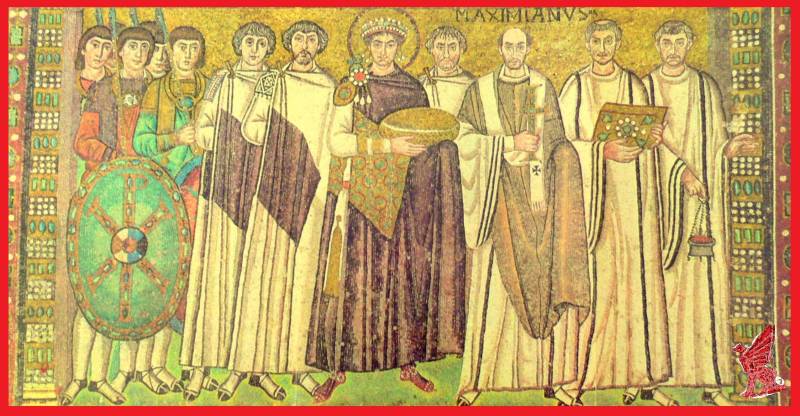
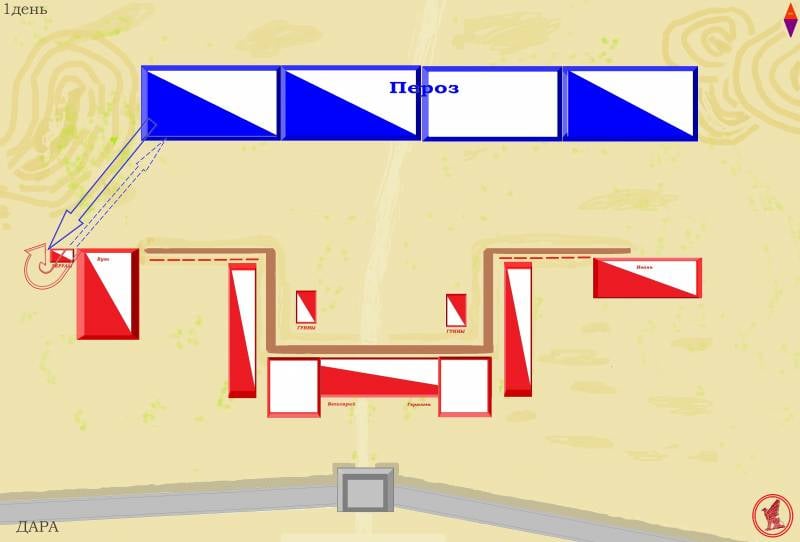
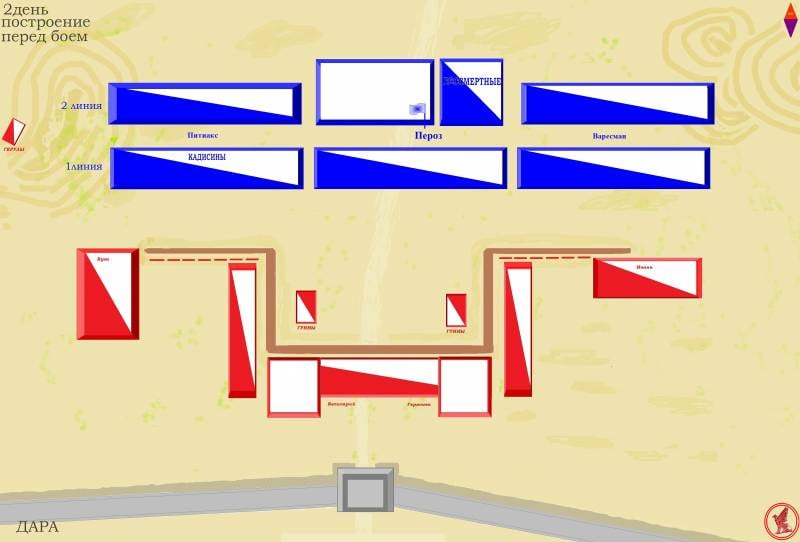
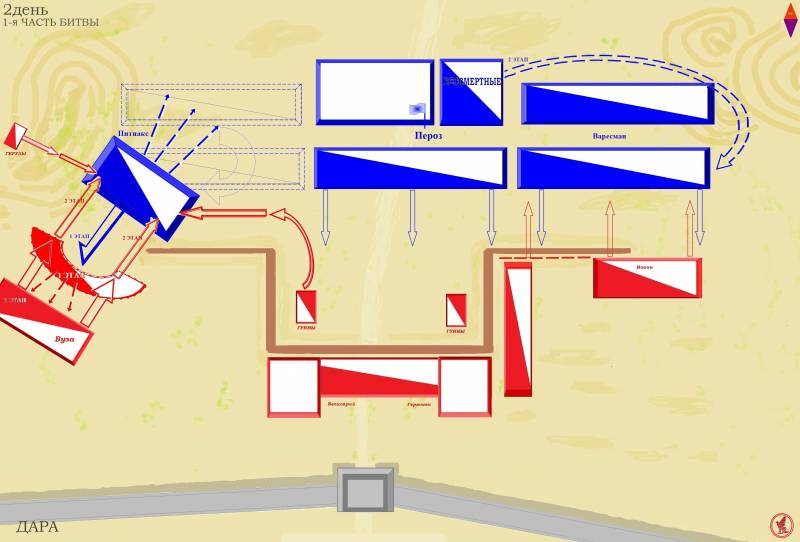
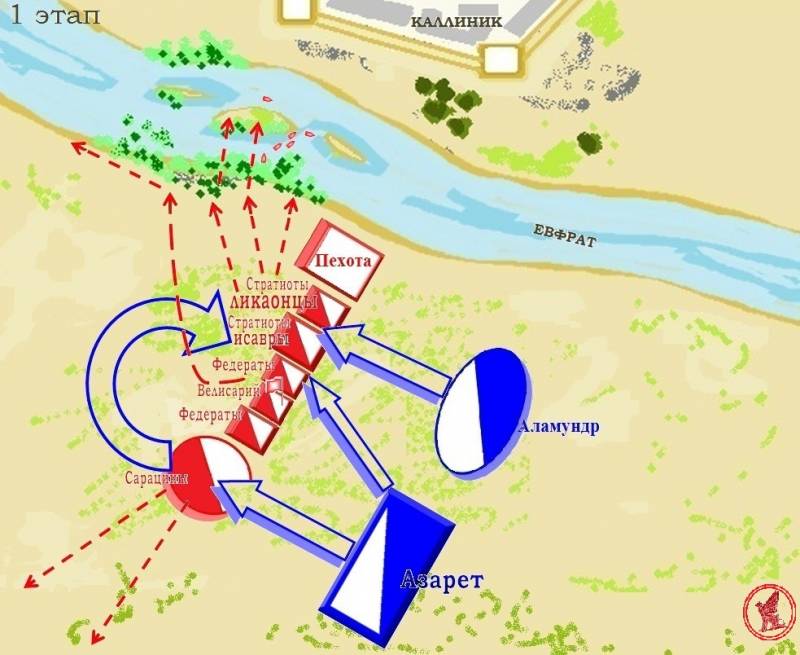
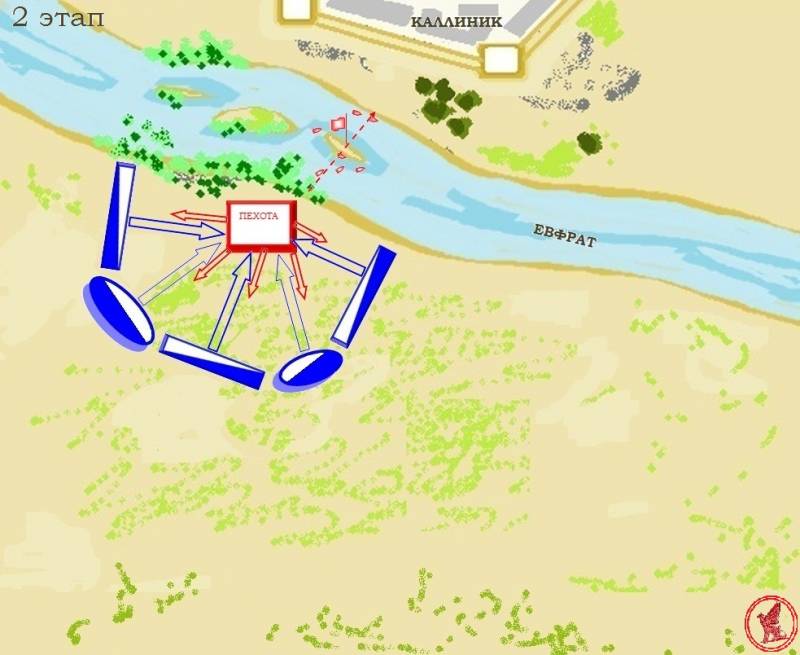
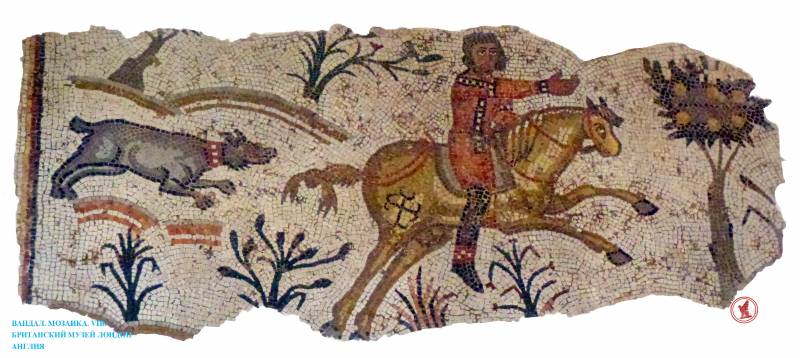
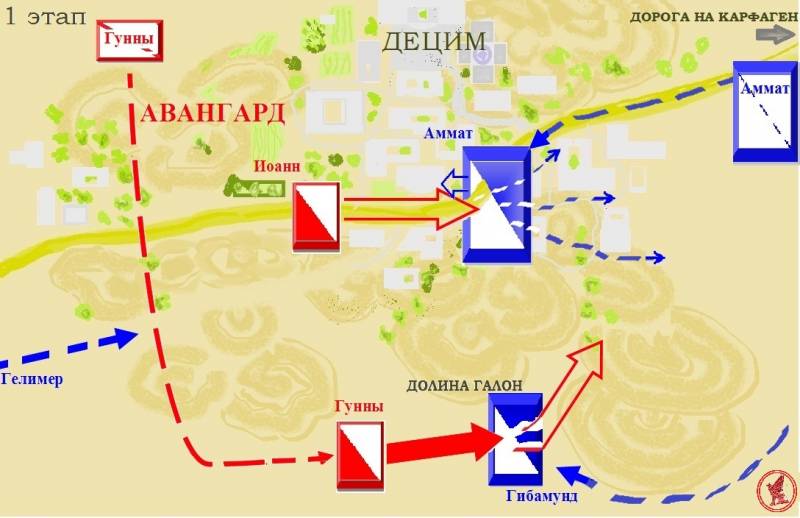
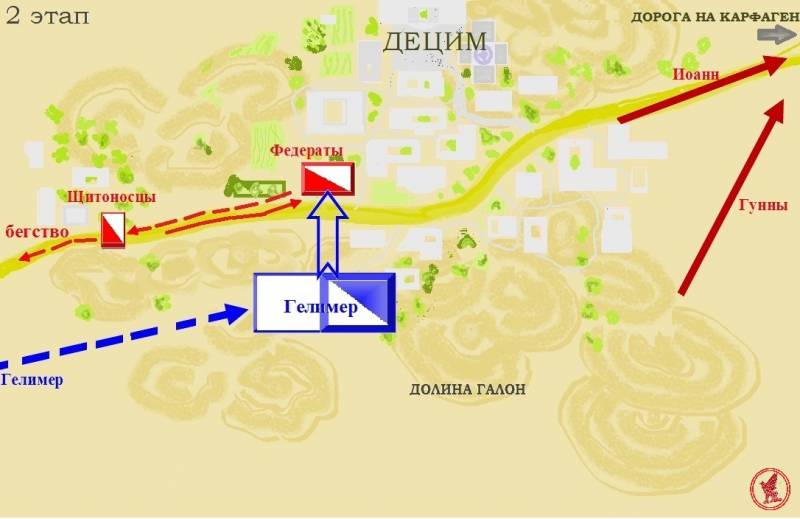
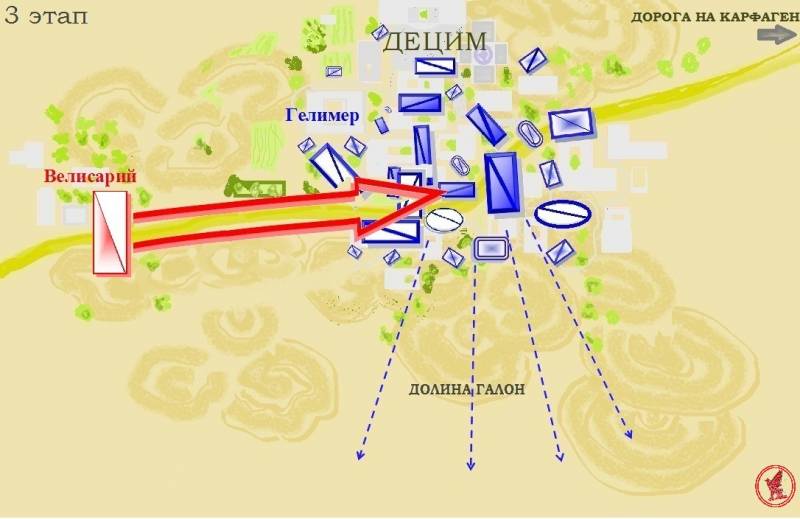
Information